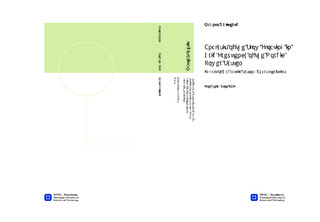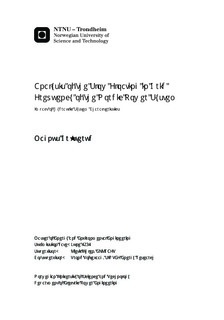| dc.contributor.advisor | Uhlen, Kjetil | nb_NO |
| dc.contributor.advisor | Toftevaag, Trond | nb_NO |
| dc.contributor.author | Grøtterud, Magnus | nb_NO |
| dc.date.accessioned | 2014-12-19T13:53:28Z | |
| dc.date.available | 2014-12-19T13:53:28Z | |
| dc.date.created | 2012-11-08 | nb_NO |
| dc.date.issued | 2012 | nb_NO |
| dc.identifier | 566408 | nb_NO |
| dc.identifier | ntnudaim:7611 | nb_NO |
| dc.identifier.uri | http://hdl.handle.net/11250/257339 | |
| dc.description.abstract | This Master's Thesis work deals with the analysis of the observed slow floating in the grid frequency of the Nordic power system. Measurements indicate that the frequency of this floating or oscillation is around 11-17 mHz. The reason for this floating is not known to this date, but it is suspected that it will increase the wear of the turbines that are providing primary regulation. In this work possible interaction between the hydraulic system and the power system has been emphasized and whether the governor settings may influence the slow floating, or not. The hydraulic models for the water conduit and turbine that are implemented in power system analysis tools are often simplified. In this Master's Thesis a hydraulic model that includes the effect of water hammer, surge tank and head loss has been implemented in the analysis tool SIMPOW. A three-machine equivalent of the Norwegian and Swedish power system has been established to study the response of the frequency after a severe disturbance.It has been demonstrated that for a severe disturbance a low-frequency mass oscillation will occur in the tunnel between the surge tank and the reservoir in the model. This will cause an oscillation in the pressure at the turbine which affects the grid frequency. The frequency of the mass oscillation depends on the construction of the tunnel and surge tank and will be different for every hydro power plant. Frequencies in the range of 5-11 mHz was found for the model used in this Thesis. It has been illustrated that with different characteristics for the two hydro power plants in the model, the floating in power system frequency will be the sum of the mass oscillations, which is assumed to be the case for the real power system. The governor parameters are found to have little influence on the damping of the low-frequency oscillations. For further work a study of the impact of several different hydro power plants in a more extensive equivalent of the Nordic power system is suggested. For this work emphasis should be on finding parameters for typical Norwegian and Swedish hydro power plants. | nb_NO |
| dc.language | eng | nb_NO |
| dc.publisher | Institutt for elkraftteknikk | nb_NO |
| dc.subject | ntnudaim:7611 | no_NO |
| dc.subject | MTENERG energi og miljø | no_NO |
| dc.subject | Elektrisk energiteknikk | no_NO |
| dc.title | Analysis of the Slow Floating in Grid Frequency of the Nordic Power System: Impact of Hydraulic System Characteristics | nb_NO |
| dc.type | Master thesis | nb_NO |
| dc.source.pagenumber | 104 | nb_NO |
| dc.contributor.department | Norges teknisk-naturvitenskapelige universitet, Fakultet for informasjonsteknologi, matematikk og elektroteknikk, Institutt for elkraftteknikk | nb_NO |

